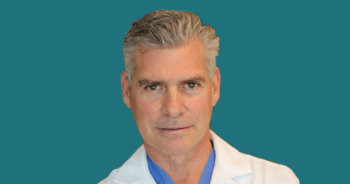
Around the Helix: Cell and Gene Therapy Company Updates – October 11, 2023
Catch up on the latest news, breakthroughs, and announcements from biotechnology companies making advancements in cell and gene therapies.
The cell and gene therapy sectors are growing exponentially, with new players emerging daily and much progress being made both in and out of the lab. CGTLive™’s Around the Helix is your chance to catch up with the latest news in cell and gene therapies, including partnerships, pipeline updates, and more.
Have a cell and gene therapy news update you’d like to share with our editorial team? Tag us on social and use #AroundTheHelix!
1. Tenaya’s Trial of Hypertrophic Cardiomyopathy Gene Therapy TN-201 Doses First Patient
Tenaya Therapeutics has dosed the first patient in the MyPeak-1 phase 1b clinical trial (NCT05836259) evaluating TN-201, an investigational adeno-associated virus (AAV)-vector based gene therapy intended to treat hypertrophic cardiomyopathy caused by mutations in the MYBPC3 gene.
2. AviadoBio Begins Trial for Frontotemporal Dementia Gene Therapy AVB-101
AviadoBio has initiated the phase 1/2 ASPIRE-FTD clinical trial (NCT06064890), which is evaluating AVB-101, an investigational AAV vector-based gene therapy intended to treat frontotemporal dementia associated with progranulin gene mutations.
3. bluebird's HGB-210 Trial Hopes to Support First SCD Gene Therapy Approval
With anticipation building for lovo-cel (lovotibeglogene autotemcel; bluebird bio)’s Prescription Drug User Fee Act goal date of December 20, 2023, CGTLive took a look at the therapy’s turbulent course of development and the clinical trials evaluating the therapy for the treatment of sickle cell disease (SCD).
4. CGT Therapies More Likely to Gain Approval for Hematological Malignancies, Orphan Diseases
A new analysis by NEWDIGS at Tufts Medical Center has revealed that cell therapies for hematological malignancies and cell and gene therapies for orphan designations are more likely to succeed in clinical trials and get FDA-approved than the average therapeutic in these disease areas.
5. uniQure Lays Off Employees As Part of Strategic Restructuring
In a move expected to save the company $180 million, uniQure let go of 28% of its employees who are not involved in necessary manufacturing activities for Hemgenix. Additional elements of the strategic restructuring include the dropping more than 50% of the company’s research and technology projects; the departure of the chief scientific officer; and a prioritization of programs for Huntington disease, refractory mesial temporal lobe epilepsy, SOD1-amyotrophic lateral sclerosis, and Fabry disease.
6. Kyowa Kirin Brings Orchard TherapeuticsInto the Fold
Orchard Therapeutics’ atidarsagene autotemcel (arsa-cel, Libmeldy) is a cell therapy for the treatment of metachromatic leukodystrophy that is approved in the European Union, UK, Iceland, Liechtenstein, and Norway, but remains an investigational therapy in the United States. Recently,
7. Intellia and Regeneron to Make Foray Into Neurological and Muscular Disease Space With Gene Editing Therapy Research
The 2 companies, which are already engaged in collaboration on CRISPR-based gene editing therapy projects, announced an expansion of their work into new therapeutic areas. “To date, the widespread use of genetic medicines has generally been limited by the inability to deliver a genetic payload to cells of interest in the body beyond the liver,” Aris Baras, MD, the senior vice president and cohead of Regeneron Genetic Medicines, said in a statement. “This expansion of our longstanding and productive collaboration with Intellia is taking advantage of new technology and innovations to unlock these opportunities.”
8. Ginkgo Bioworks and Pfizer Team Up to Take on the RNA Therapeutic Space
In a new collaboration, Pfizer will utilize Ginkgo’s RNA technology in discovery and development activities for novel RNA therapeutics. Although no specific disease focus or targeted therapeutic space was announced for the collaboration, it may include 3 different programs. The companies noted that between upfront and milestone payments and other fees Ginkgo may receive up to $331 million from Pfizer.
9. Be the Match Seeks to Boost Patient Access to Cell and Gene Therapy With 2 New Partnerships
The National Marrow Donor Program (NMDP)/Be The Match has established new collaborative relationships with both New York Blood Center Enterprises’ Comprehensive Cell Solutions and Vitalant’s Cell Therapy Lab. “By expanding our partnerships, we continue to increase our expertise in cryopreservation and storage of donor blood stem cell products for our network of transplant centers,” Heather Stefanski, MD, PhD, the vice president of medical services at NMDP/BeThe Match, said in a statement.
10. Charles River Aims to Cut Lentiviral Vector Production Times With New Manufacturing Platform
Charles River has stated that Lentivation, its new lentiviral vector manufacturing platform for use in cell and gene therapy production, is capable of cutting production times for the products by more than half: from the traditional 18 months down to under 7 months.
Newsletter
Stay at the forefront of cutting-edge science with CGT—your direct line to expert insights, breakthrough data, and real-time coverage of the latest advancements in cell and gene therapy.











































